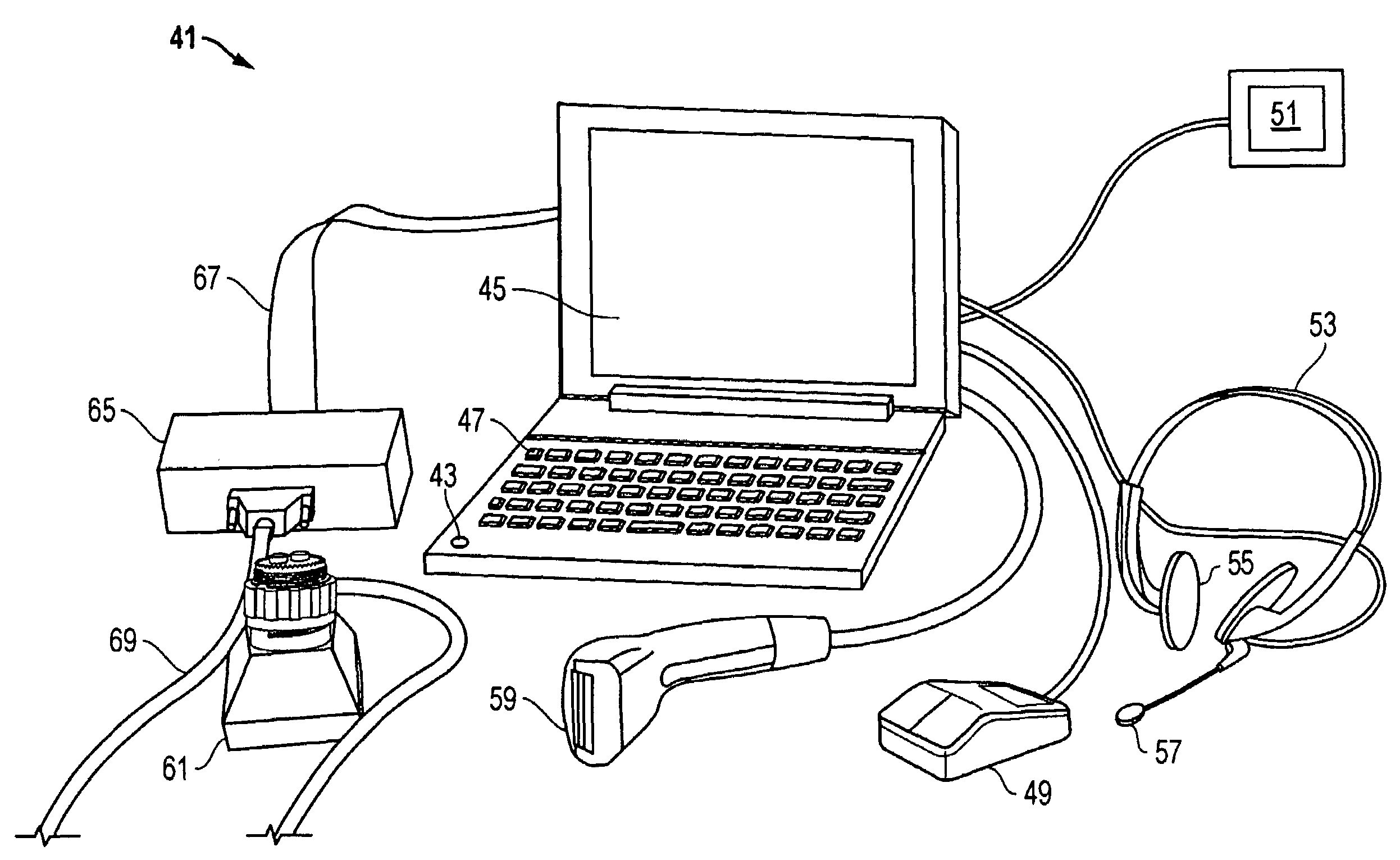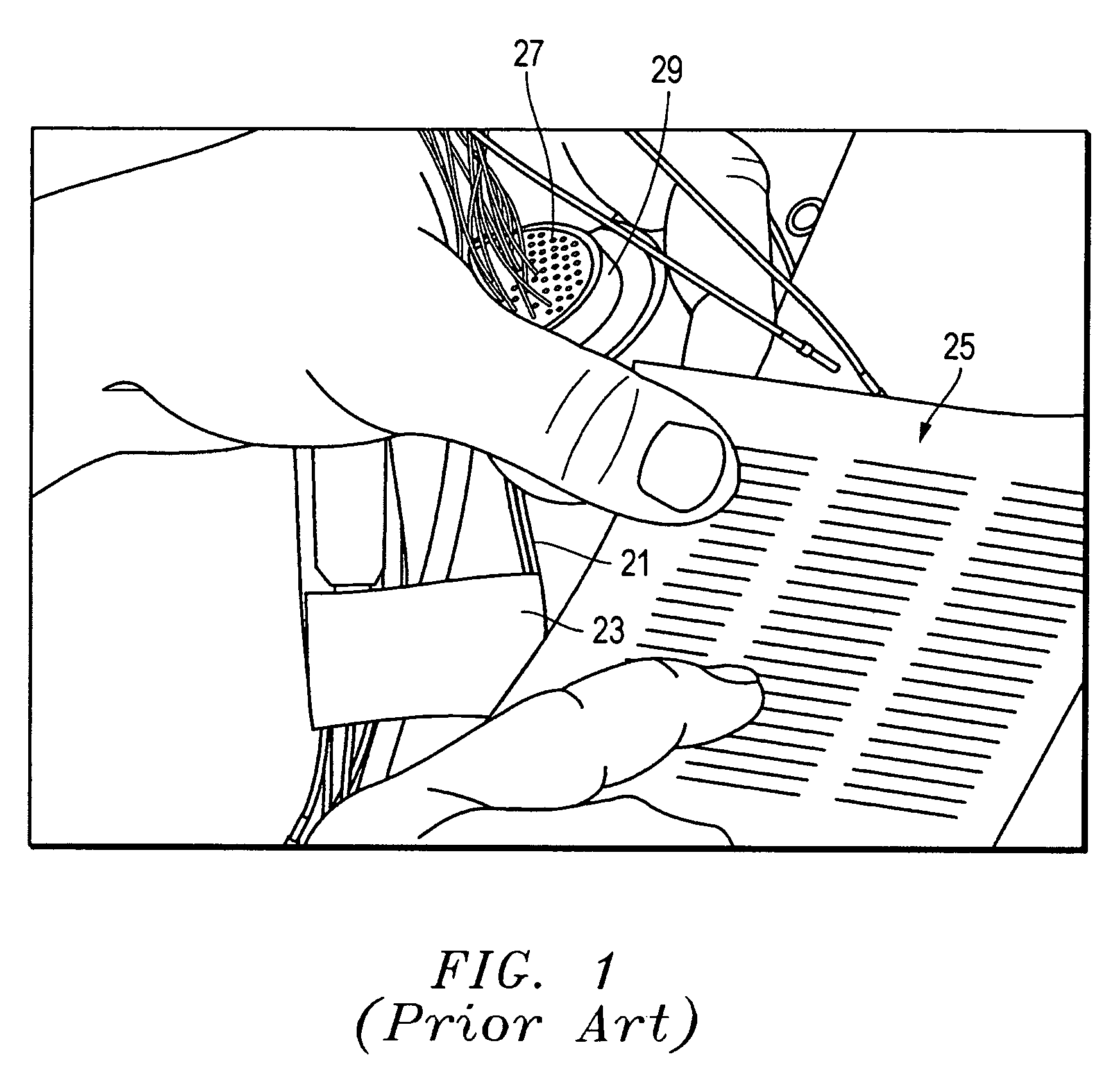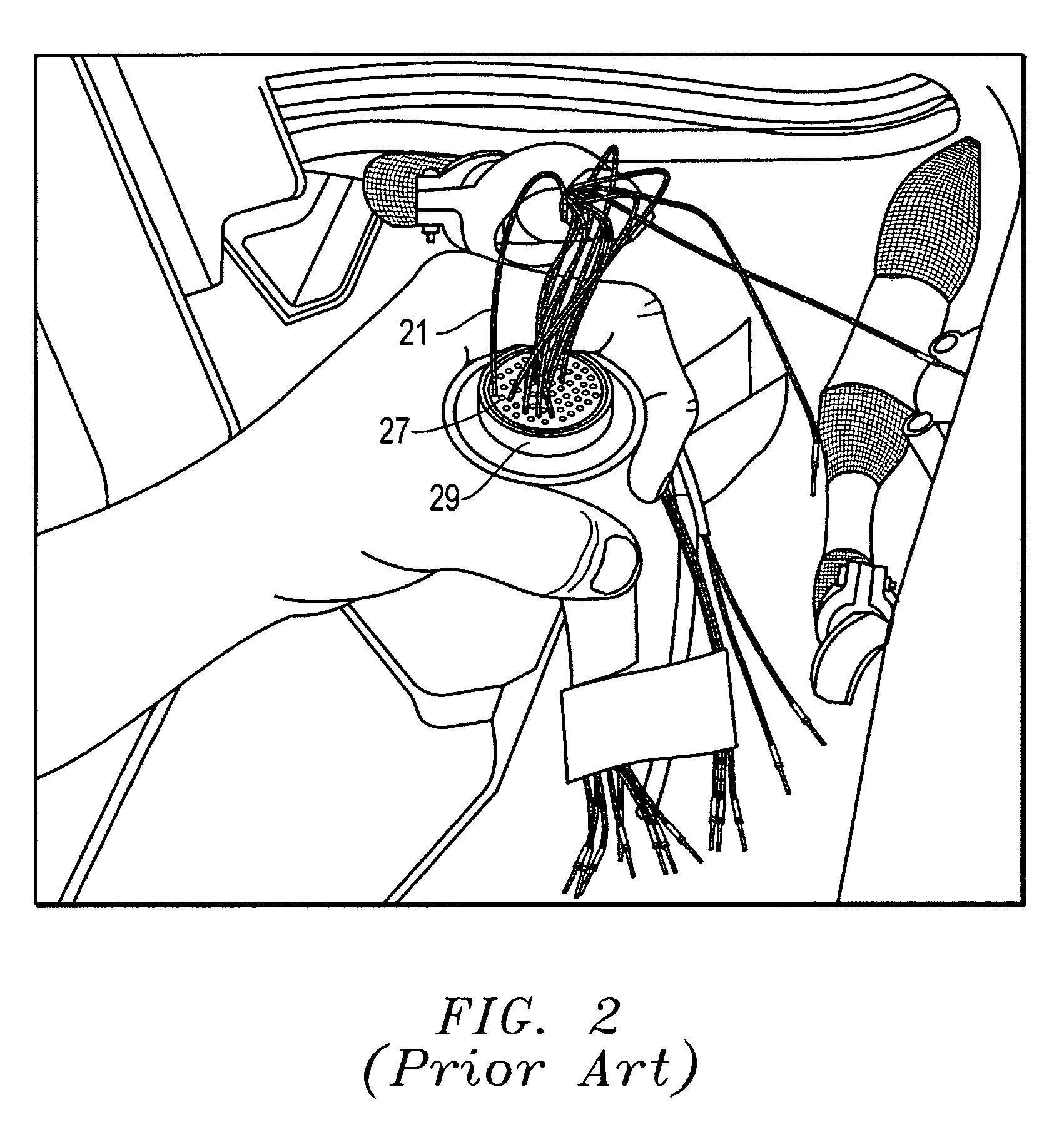System, for matching harnesses of conductors with apertures in connectors
a technology of connectors and harnesses, applied in the field of complex wire harnesses, can solve problems such as unfavorable work positions, and achieve the effects of convenient use, easy maintenance, and easy learning
- Summary
- Abstract
- Description
- Claims
- Application Information
AI Technical Summary
Benefits of technology
Problems solved by technology
Method used
Image
Examples
Embodiment Construction
[0021]Referring to FIG. 4, one embodiment of a system 41, method, and apparatus for matching conductors with apertures in a connector is disclosed. The term “conductors” is used generically herein to refer to all types of conductors including but not limited to electrical and optical conductors, a single strand of wire, wires, and / or a cable of wires, etc. As described above and shown in the preceding FIGS. 1–3, the conductors 21 are usually bundled in groups or harnesses 31. A typical harness 31 may comprise only a few conductors 21 or more than 100 conductors 21. A typical connector 29 has many apertures 27 for receiving the terminal ends of the conductors 21.
[0022]The system 41 includes many different components, some of which are optional, as will be described below. Although many of these components are illustrated as being “hard-wired” to each other, they may utilize wireless technology as well. A main component of system 41 is a computer 43, such as the laptop computer shown....
PUM
| Property | Measurement | Unit |
|---|---|---|
| diameters | aaaaa | aaaaa |
| diameter | aaaaa | aaaaa |
| voltage | aaaaa | aaaaa |
Abstract
Description
Claims
Application Information
 Login to View More
Login to View More - R&D
- Intellectual Property
- Life Sciences
- Materials
- Tech Scout
- Unparalleled Data Quality
- Higher Quality Content
- 60% Fewer Hallucinations
Browse by: Latest US Patents, China's latest patents, Technical Efficacy Thesaurus, Application Domain, Technology Topic, Popular Technical Reports.
© 2025 PatSnap. All rights reserved.Legal|Privacy policy|Modern Slavery Act Transparency Statement|Sitemap|About US| Contact US: help@patsnap.com



